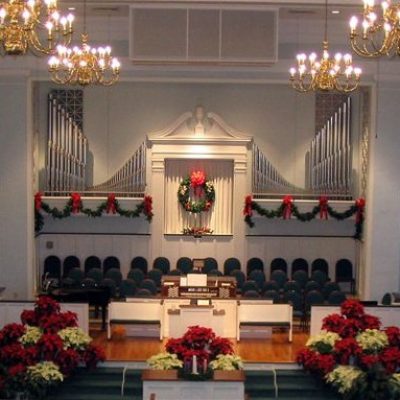Understanding the Importance of Sanctuary Decoration
Decorating a church sanctuary is more than just an aesthetic endeavor; it is a significant aspect of enhancing the worship experience. A well-decorated sanctuary can inspire spiritual growth, foster community, and create a welcoming atmosphere for congregants and visitors alike.
As someone who has participated in several church decoration projects, I can attest that thoughtful decor not only beautifies the space but also brings people together in a shared sense of reverence and purpose. In this article, we will explore various aspects to consider when decorating your church sanctuary, from themes and colors to practical tips and ideas.
Key Elements to Consider When Decorating a Sanctuary
1. Purpose and Function
Before diving into decoration, it’s essential to understand the primary functions of your church sanctuary. The space should accommodate worship services, ceremonies, and community gatherings.
Pros and Cons of Different Purposes
| Function | Pros | Cons |
|---|---|---|
| Worship Services | Focus on spirituality, community engagement | May require specific seating arrangements |
| Ceremonies (Weddings, Baptisms) | Special atmosphere for life events | Possible need for temporary decorations |
| Community Events | Encourages fellowship | May require versatile setups |
2. Understanding Your Congregation
Consider the demographics and preferences of your congregation. The decoration should reflect their values and preferences, making them feel at home. Conduct surveys or hold discussions to gather feedback.
3. Choosing a Theme
Your theme will guide your decoration choices. Popular themes include:
- Nature-Inspired
- Traditional
- Modern Minimalism
- Seasonal Decor (Advent, Easter)
For example, a nature-inspired theme might include earthy colors and organic materials, while a modern minimalist theme might utilize clean lines and neutral colors.
Color Schemes and Mood Settings
1. The Psychology of Color
Colors evoke emotions and set the mood within a space. Selecting the right color palette is crucial for creating the desired atmosphere. Here are some feelings associated with common colors:
- Blue: Peace, trust, and calmness
- Green: Renewal, growth, and harmony
- Red: Passion, love, and strength
- White: Purity, peace, and cleanliness
,_interior,_sanctuary_decorated_for_Christmas.jpg)
2. Creating Harmonious Color Combinations
Consider using a main color, a secondary color, and an accent color to create visual interest. For instance:
| Main Color | Secondary Color | Accent Color |
|---|---|---|
| Soft Blue | Warm Gray | Gold |
| Forest Green | Ivory | Rust Orange |
Decorative Elements to Enhance the Sanctuary
1. Altars and Pulpits
The focal points of any church sanctuary are the altar and pulpit. Consider creating a unique design that reflects your theme. Options include:
- Natural materials (wood, stone)
- Intricate carvings or artwork
- Seasonal decorations
,_interior,_sanctuary_decorated_for_Christmas.jpg)
2. Lighting
Lighting plays a crucial role in setting the atmosphere. Combine natural light with soft artificial light to create warmth. Options include:
- Chandeliers
- Wall sconces
- LED strips for mood lighting
Consider dimmable options to adjust the lighting for different occasions.
3. Seating Arrangements
The layout of the seating can significantly impact the engagement of the congregation. Here are a few arrangements to consider:
- Theater Style
- Circle or Semi-Circle
- Traditional Rows
Comparison of Seating Arrangements
| Arrangement | Pros | Cons |
|---|---|---|
| Theater Style | Good for presentations | Less interaction |
| Circle/Semi-Circle | Encourages participation | Requires more space |
| Traditional Rows | Familiar for congregants | Less intimate feel |
,_interior,_sanctuary_decorated_for_Christmas.jpg)
Incorporating Artwork and Symbolism
1. Religious Art and Statues
Incorporating religious art can enhance the sanctity of the sanctuary. Consider featuring:
- Statues of saints or religious figures
- Painted murals or icons
- Stained glass windows
2. Banners and Textiles
Banners can convey messages of faith and add color to the sanctuary. Choose fabrics that complement your color scheme and theme.
Pros and Cons of Using Textiles
| Type | Pros | Cons |
|---|---|---|
| Banners | Easy to change for seasons | May require storage space |
| Tablecloths | Add elegance | Can be costly |

Seasonal Decorations
Adapting decorations for different times of the year can keep the sanctuary feeling fresh and relevant. Here’s how to embrace each season:
- Advent and Christmas: Incorporate wreaths, candles, and nativity scenes.
- Epiphany: Use stars and light themes.
- Lent: Adopt minimalistic and somber decor.
- Easter: Celebrate with bright flowers and joyful colors.
Practical Tips for Successful Decor Projects
1. Budgeting
Set a realistic budget before starting your decorating project. Consider seeking donations or community sponsorships to help fund your efforts.

2. Engaging the Congregation
Involve your church community in the decoration process. This can be done by forming a decoration committee or organizing volunteer days to work on projects together.
3. Hiring Professionals
If your budget allows, consider hiring professionals for specific projects like lighting installations or artwork. Their expertise can elevate the overall quality of your sanctuary’s decor.
Pros and Cons of Hiring Professionals
| Pros | Cons |
|---|---|
| High-quality results | Higher cost |
| Expert guidance | Less community involvement |

Maintaining Your Church Sanctuary Decor
Regular maintenance is essential to keep your sanctuary looking its best. Here are some tips:
- Schedule periodic cleanings for textiles and surfaces.
- Update decor as needed to reflect community changes and seasons.
- Conduct inspections for wear and tear on decorations and infrastructure.
FAQs About Decorating a Church Sanctuary
1. What are the best colors for a church sanctuary?
Soothing, neutral colors like blue, green, and pastel shades tend to create a calming atmosphere, while more vibrant colors can be used to evoke joy and celebration during specific seasons.

2. How often should I refresh the decor?
It’s a good practice to review and refresh decorations at least twice a year, especially during major holidays or liturgical seasons.
3. Can volunteers help with decorating the sanctuary?
Absolutely! Engaging volunteers can foster community spirit and make the decoration process more meaningful and enjoyable.